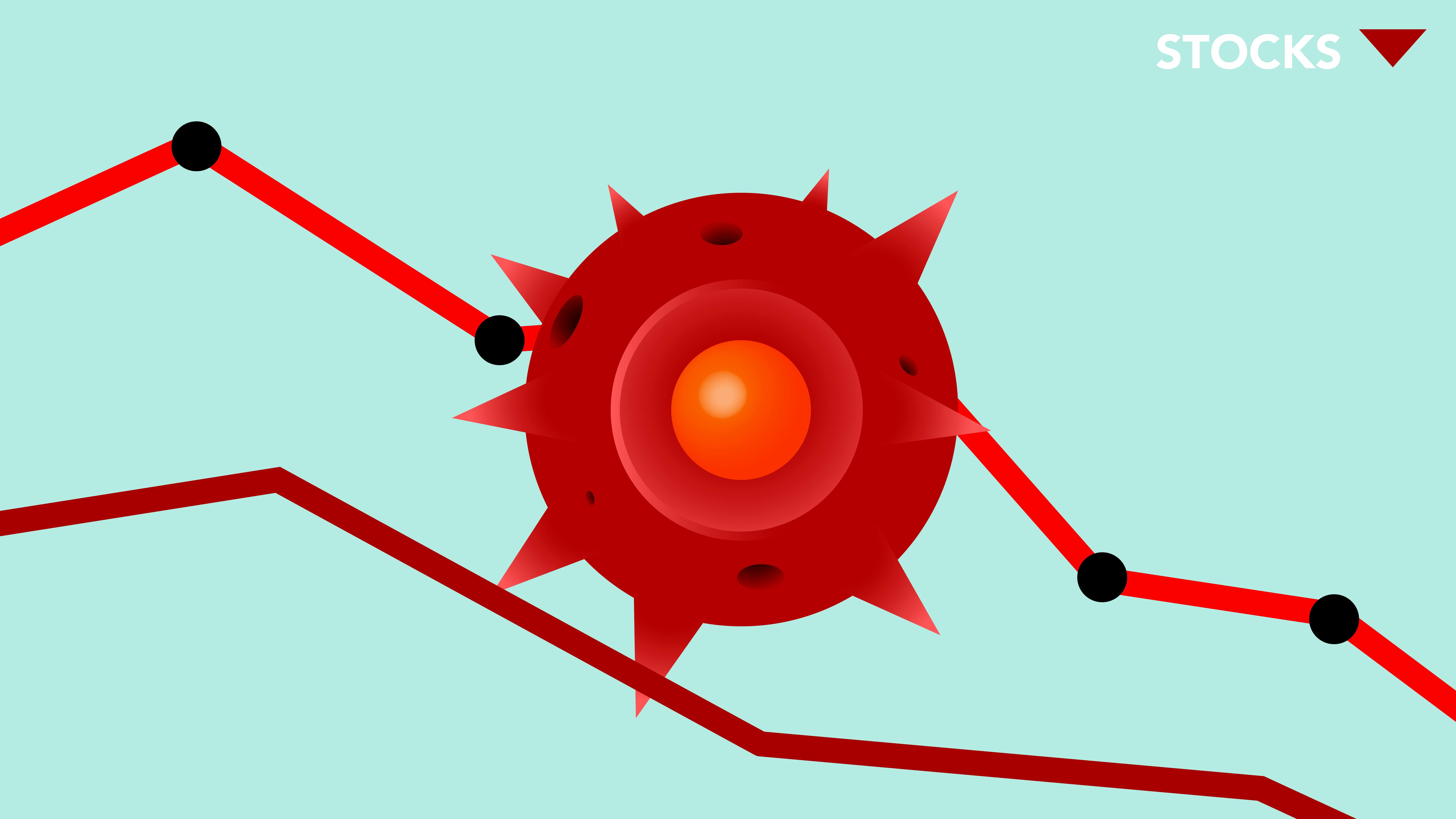Stocks in the U.S. slump into bear market condition, persisting with the toll of tariffs on Wall Street.
Stock Market Plummets: Trump's Tariffs Rattle Global Economy
Monday morning saw a dismal start for US stocks as global markets spiraled due to worries about how Trump's hardline tariff measures could throw the world economy off balance and strain domestic growth.
Markets opened with a bleak outlook - a plunge of 20% from a recent high - following a tumultuous rout in Asia and massive losses in Europe. The Dow shed 1,200 points, or 3.2%, while the S&P 500 plunged 3.4% and started in bear market territory. The Nasdaq Composite dipped 3.96%. Remarkably, the S&P 500 hit an all-time high less than seven weeks ago, on February 19, but failing to maintain this level is a strong possibility now.
Investors, though, may see this downturn as a lucrative buying opportunity. Given the recent and rapid selloff, stocks are becoming relatively cheap, trading at merely 15 times projected future earnings. This undervaluation could fuel a rebound if traders believe stocks are undervalued.
James Demmert, chief investment officer at Main Street Research, opines, "We are approaching a bottom. The fact that stocks have dropped so significantly during these deep intraday moves is a clear indication of panicked, emotion-driven selling. Such selling patterns tend to lead to significant rallies."
However, Trump's defiant stance may cloud the message Wall Street is attempting to send. The chaotic market landscape may inadvertently provide some leeway for negotiations.
Trump disclosed that he's receiving calls from tech titans and world leaders over the weekend, discussing tariffs. The President hinted at the possibility of striking a deal with China and the European Union, provided they rectify the trade imbalance with the US. Such a feat, however, may be elusive, if not unattainable.
"If they wish to talk about that, I am open to it," trump stated.
The market's resilience to rebound from its steep declines may encourage Trump to persevere despite the turmoil in the market.
"We need this market to crash to maintain pressure on the administration," Ed Yardeni, president of Yardeni Research, told CNN. Yardeni earlier stated that "Liberation Day" is usually followed by "Annihilation Days" in the stock market.
Wall Street's "Fear Gauge," the Cboe Volatility Index, or VIX, has shot up to levels reminiscent of the Covid-19 pandemic as investors worry about the market's next move.
Trump, on the other hand, has attempted to spin a positive narrative, arguing that recession fears might be beneficial. For example, US oil prices dropped below $60 for the first time since April 2021 due to fears of shrinking global demand in a potential downturn. Additionally, yields on government bonds have dropped as investors flocked to what they perceive as safe-haven assets like Treasuries, potentially reducing some consumer rates pegged to Treasury yields, such as mortgages, credit cards, and auto loans. However, Federal Reserve Chair Jerome Powell stated on Friday that the central bank was in no rush to lower rates.
"Oil prices are down, interest rates are down (the slow-moving Fed should cut rates!), food prices are down, there is no inflation, and the long-suffering USA is bringing in Billions of Dollars a week from the abusing countries on Tariffs that are already in place," Trump wrote in a Truth Social post Monday morning.
Uncertainty Looms
Trump and his tariffs stand on the brink of transforming a once thriving bull market into a bear faster than any president has achieved in modern times. If the market ends in bear territory, it would mark the earliest in a new administration that a bull market has transformed into a bear since the S&P 500's inception in 1957.
One reason behind the bearish sentiments stems from the uncertainty the Trump administration has created with its inconsistent messaging regarding the tariffs and their potential negotiation.
On Wednesday, the US will impose significantly higher "reciprocal" tariffs on several countries with the highest trade imbalances. Financial giant Goldman Sachs warned that if Trump implements these tariffs, it would certainly push the US and global economies into a recession. CEO of JPMorgan, Jamie Dimon, stated in his annual letter to shareholders that Trump's tariffs would raise prices and slow economic growth.
Beyond the baseline 10% universal tariffs that took effect this weekend, Trump has also slapped tariffs on autos, steel, and aluminum. He also imposed 25% tariffs on certain goods from Canada and Mexico. Moreover, auto part tariffs are scheduled to take effect no later than May 3, while Trump has threatened tariffs on lumber, pharmaceuticals, copper, and microchips, among other items. Whether or not Trump follows through on these threats will likely determine whether the economy plunges into a global downturn.
If you ask Commerce Secretary Howard Lutnick, Trump isn't bluffing. "The tariffs are coming. (Trump) announced it, and he wasn't kidding," Lutnick said on CBS's "Face the Nation" on Sunday. "The tariffs are coming. Of course, they are."
This is a developing story and will be updated.
Historical Context: The speed and magnitude of the current market downturn stemming from Trump's tariffs are reminiscent of the fastest peak-to-bear market shift in the S&P 500. During the 2020 COVID-19 pandemic, the S&P 500 plunged 34% in just one month, making it the shortest bear market on record [2][4]. In recent times, another dramatic decline has been observed following Trump's tariffs, contributing to a bear market in April 2025, marking one of the quickest such shifts in history [1][3].
Investors may see the recent market downturn as a potential investing opportunity, with stocks trading at relatively low valuations compared to projected future earnings. However, the tumultuous market landscape created by Trump's tariffs could inadvertently provide some leeway for negotiations. If Trump implements the proposed higher tariffs on several countries, as suggested by financial giants like Goldman Sachs, it could push the US and global economies into a recession, which may those tariffs a significant factor in the market's recovery.








